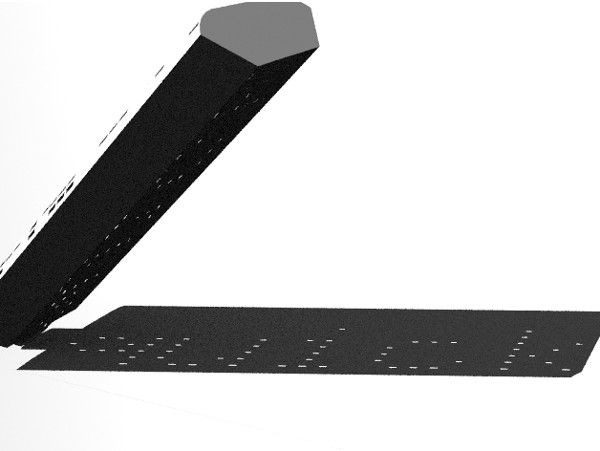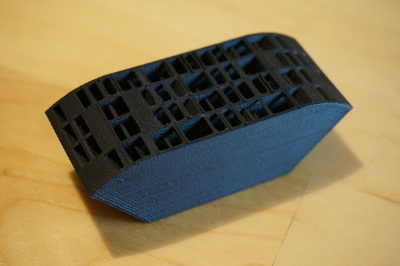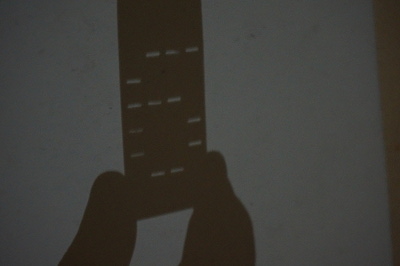Customizable Shadow Display 3D Printer Model
The file 'Customizable Shadow Display 3D Printer Model' is (stl,scad) file type, size is 984.4KB.
The file 'Customizable Shadow Display 3D Printer Model' is (stl,scad) file type, size is 984.4KB.
A digital display which displays whatever you want, whenever you want. No batteries, no motor, no electronics, only a 3D-printed object and its shadow.
See the GitHub repository.



Note: This item is a work in progress. I am working on optimizations and errors detections. Until then, it's strongly recommended to verify your design with the Blender script before to print it (see below).
This work is inspirated by the Mojoptix project Mojoptix project, who describes the sundial as it:
It's a Sundial displaying the time inside its shadow, with actual digits !
There is a tiny bit of magic inside...No batteries, no motor, no electronics... It's all just a really super-fancy shadow show. The shape of the sundial has been mathematically designed to only let through the right sunrays at the right time/angle. This allows to display the actual time with sunlit digits inside the sundial's shadow.
The sundial displays time (with actual digits !!) from 10:00 until 16:00, updating every 20 minutes.
You can precisely adjust the displayed time simply by rotating the gnomon (the magic box that displays time). So you can even adjust for Daylight Saving Time.

Its video podcast describes this sundial in details.
Contrary to the Mojoptix sundial, this one allows you to display, instead of the clock numbers, whatever and whenever you want. The displayed text can be as long as you want, and can contain all usual characters. In addition, you can customize a lot a others parameters, like the digits duration or the gnomon shape.
See the simulation on Youtube for the quick_fox.stl example.
The attached STL files are not required, it's just few items made with the Customizer app to show you what you can do (see Text option bellow).
Note: When rendering the sundial, you may get CGal warnings saying there are a lot of elements. If you are using the Customizer app, just ignore them. If you are using OpenSCAD on you own computer, you can increase the value of parameters Tun off rendering at and cache size in the OpenSCAD preference window.
Hello;world. Try with these ones:The;quick;brown;fox;jumps;over;the;lazy;dog.10:00;10:20;10:40;11:00;11:20;11:40;12:00;12:20;12:40;13:00; 13:20;13:40;14:00;14:20;14:40;15:00;15:20;15:40;16:000;1;2;3;4;5;6;7;8;90-9, and :. If your text contains other characters, an error will occurs.0-9, a-z, A-Z, and !"#%$&'()*+,-./:;<=>?@[]^_``{|}~¤, where ~ and ¤ are respectively a full black digit and a heart. Note that you can easily customize and / or add fonts by editing the scad file.openscad -o sundial.stl main.scad. It will use the OpenCSG render engine, which is faster than the CGAL render for this use case.A bonus point to the first who prints a "sundial powered word clock", which displays the time each 15 minutes, in its literal form. :-D
Tested on a Up! Plus.
Hi developers and hacker! Good news, the entire code is documented and easy to read and modify! It's hosted on GitHub. It's easier to work from here and there is additional useful files (like Python and Blender scripts).
python/clean_and_merge.py before your commit (see Python scripts below).For more readability, the .scad script is splitted in 3 files: main, functions and fonts.
The functions file uses a part of my OpenSCAD library for string and vectors operations. Take a look.
PUSHED_MAIN_FILE, a cleaned copy of MAIN_FILE, by:NOTE or value=something.OUT_FILE, containing all the .scad files, by:<include> declarations by their contents (Customizer app doesn't supports multiple .scad files.).This script allows you to simulate the sun shinning on the sundial. Watch the video of a simulation, rendered with it.
Read README to know how to use it.
Please contact me for features or bug requests!
| clock.stl | 8.3MB | |
| customizable_digital_sundial.scad | 15.7KB | |
| numbers.stl | 870.5KB | |
| quick_fox.stl | 2.5MB |